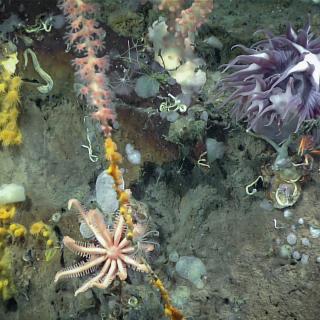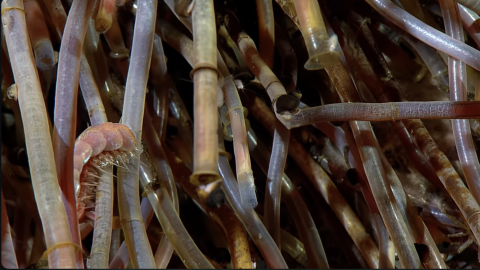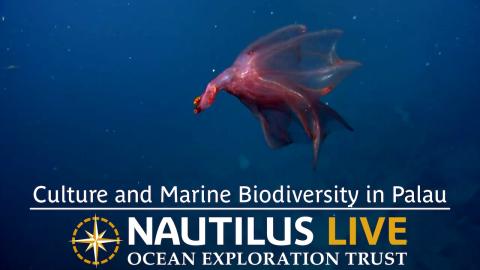Glass Squid and Anglerfish Show Off Ocean Adaptations
This highlight video is a two-for-one of Palau’s incredible ocean creatures adapted for their lives beneath the sea. First up is a translucent squid, likely a glass squid from the family Cranchiidae. There are more than 60 known species of these predators that eat crustaceans, fishes, and cephalopods. Spotted at around 700 meters deep near the summit of a seamount, glass squid spend most of their time in the mesopelagic (or twilight zone). There, their translucent bodies, augmented by tiny pigment sacs called chromatophores, help them stay hidden from predators by giving them an “invisibility cloak.”
During this dive on an unnamed seamount roughly 80 nm west of Babeldaob Island in Palau, our Corps of Exploration also spotted this Chaunax sp. anglerfish, commonly called the “frog-mouth fish.” Related to the same family as the Chaunacops, the fish’s mottled coloring is normal for this group and can sometimes help scientists better identify them as species. The structures along the side of its body are called naked neuromasts and are special sensory cells that can detect vibrations and water motion from nearby prey.

Lebuu's Voyage II - Palau
Building on the progress in the first expedition, this 11-day expedition will continue exploring Palau National Marine Sanctuary (PNMS) to understand seafloor features and the biodiversity that call deep sea habitats around Palau home. Specific cruise objectives will continue to be refined as we work with community and scientific partners.



